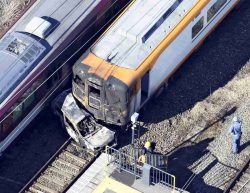Ukrainian Motanka Doll Show to Open in Yokohama on Saturday; A Project in Japan Strives to Help Children in War-Hit Ukraine
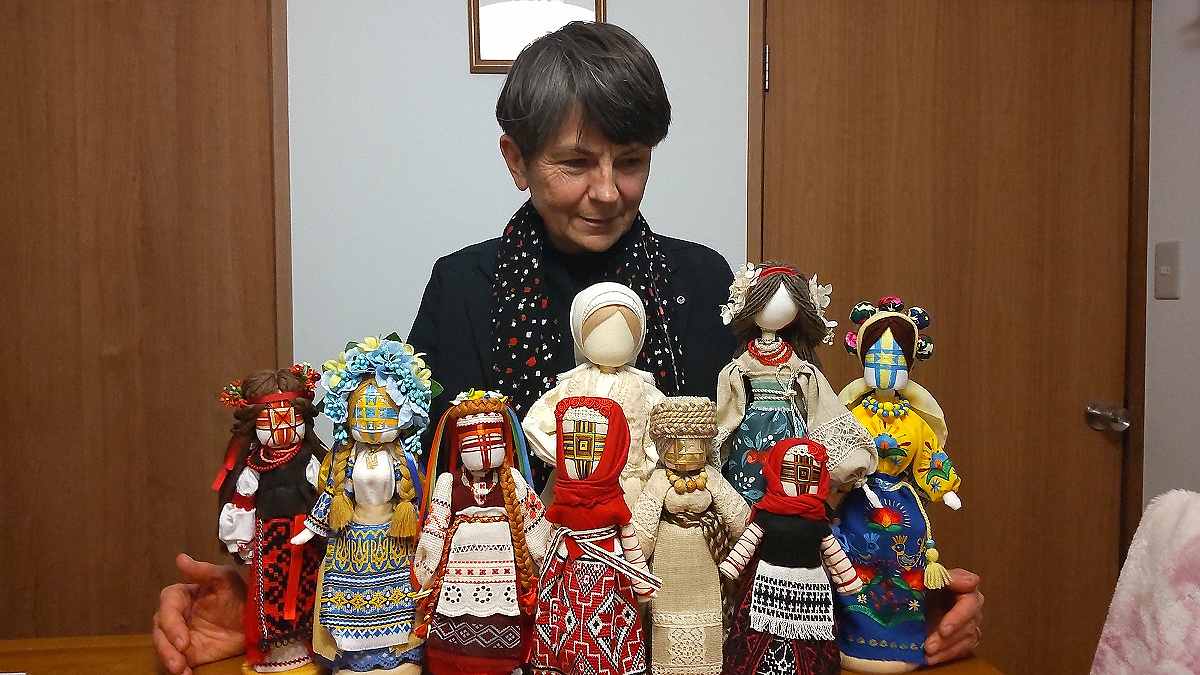
Anna Inoue looks at motanka dolls in Kanagawa Prefecture in January.
21:00 JST, February 22, 2024
As Russia’s aggression against Ukraine enters its third year and “support fatigue” for Ukraine is setting in, one project aims to remind people that the war is still ongoing while also teaching about Ukrainian culture.
The project showcases motanka, traditional Ukrainian dolls, and helps support war-affected children. Its organizer, Anna Inoue, is a Kanagawa Prefecture resident and native of Poland. The exhibition is scheduled to start at the Yokohama Doll Museum on Feb. 24, the second anniversary of the start of the war. “I hope to continue exhibitions to send hope to the children living under the war,” said Inoue.
Motanka dolls are made from cloth and colorful threads and decorated with flowers and embroidery. Their creation may date to ancient times and historically they acted as a talisman, warding off bad luck and providing protection. People, mainly women, would present the doll to their loved ones in the hope that it would protect them. “Motanka dolls are diverse in their patterns and colors, which depend on the regions of Ukraine,” Inoue said.
Supporting affected children
Under the project “100 Motanka for Peace,” motanka dolls are made and contributed by around 100 women living in Ukraine and other countries and then sent to Japan for exhibition. Funds raised through donations at the exhibitions are used to support children living in shelters in Kyiv and Lviv.
Many of the children there have been forced to leave their homes that have become a war zone and often suffer from trauma from the war, according to Inoue. The funds have helped the shelters organize workshops to make motanka as part of healing art therapy, as well as provide educational supplies and miscellaneous items such as medicine and sweets. Thanks to the previous exhibitions held last year, the project was able to raise funds to buy computers and hold the workshops for the shelters.
“These doll makers also support the children of their own country through the exhibition,” Inoue emphasized since the project raises funds through dolls made by Ukrainians.
Since the war began in 2022, Inoue has been organizing several projects to support Ukrainians. She first saw pictures of motanka dolls last May by chance when searching the internet to find a subject for a project. “I fell in love with their beauty and power,” Inoue said.
She decided to use motanka to hold exhibitions to raise funds for Ukrainian children. Initially, she didn’t know any motanka makers in Ukraine. So, she sent emails directly to Ukrainian doll makers whom she found through their websites.
Many of them responded to her message and sent their motanka to Japan. She received a total of 140 motanka dolls. The first exhibition was held last autumn.
Some doll makers are from other countries including Argentina and Portugal, but the majority are women in Ukraine, many of whom made the dolls while enduring Russian shelling. “The makers are still creating these dolls, which have helped them get through their darkest moments,” Inoue said.
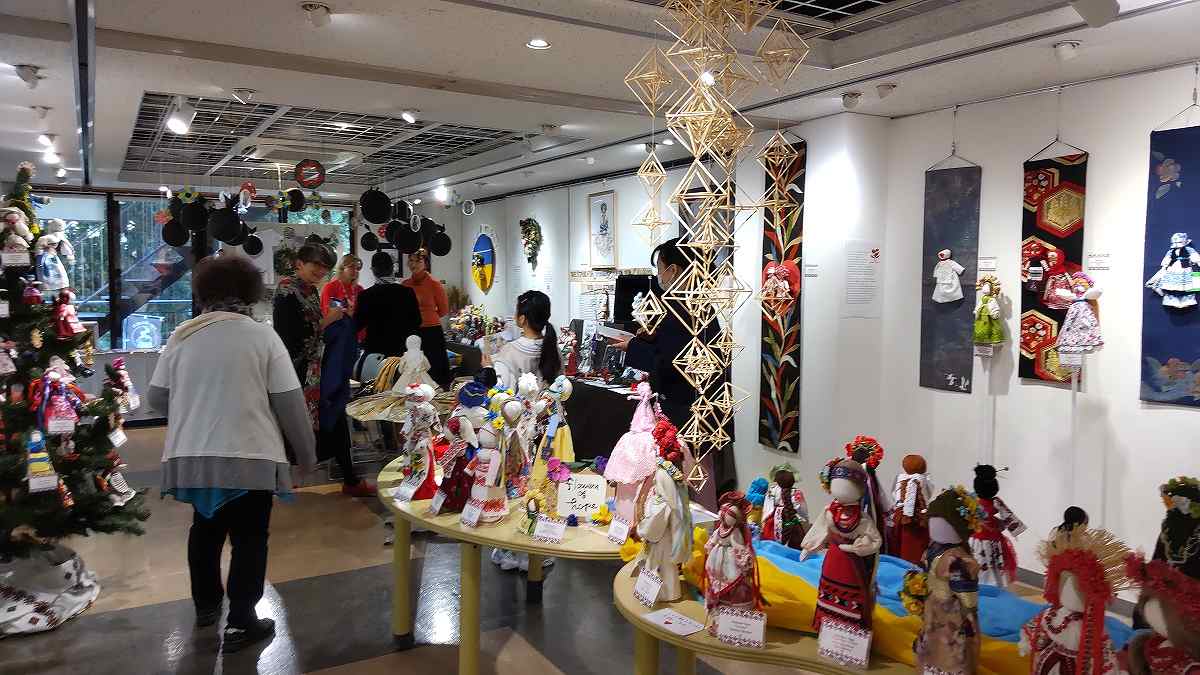
People view motanka dolls exhibited in Komae, Tokyo, in December 2023.
Message for peace
These motanka dolls invoke the messages and stories of the makers. Some of them are dressed in yellow and blue, the colors of the Ukrainian flag, while some are named “Unconquered” and “Bird of Peace.” A piece named “Family in Bucha” was dedicated to the families who were killed in Bucha early 2022.
Some of the doll makers in Ukraine shared their experiences of the war and their hopes with The Japan News.
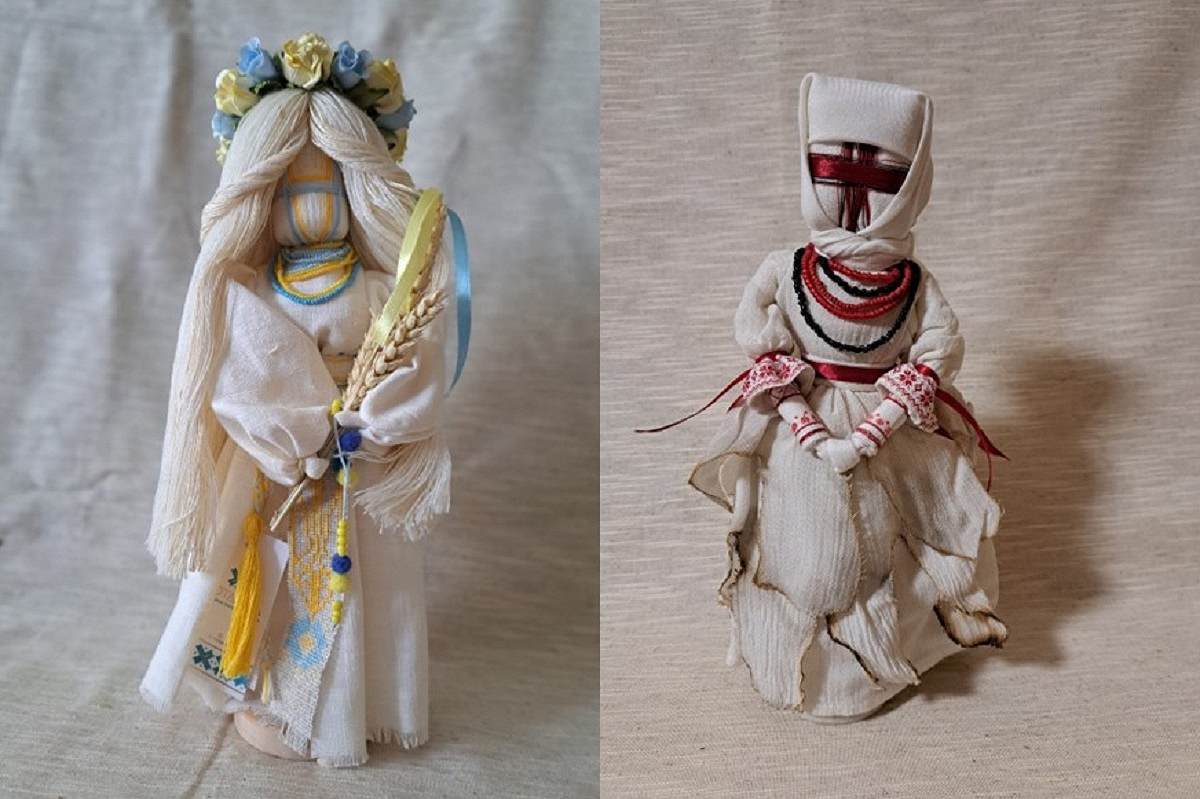
Left: “I am free” made by Cherkun Olga, “Unconquered” made by Didyk Larysa
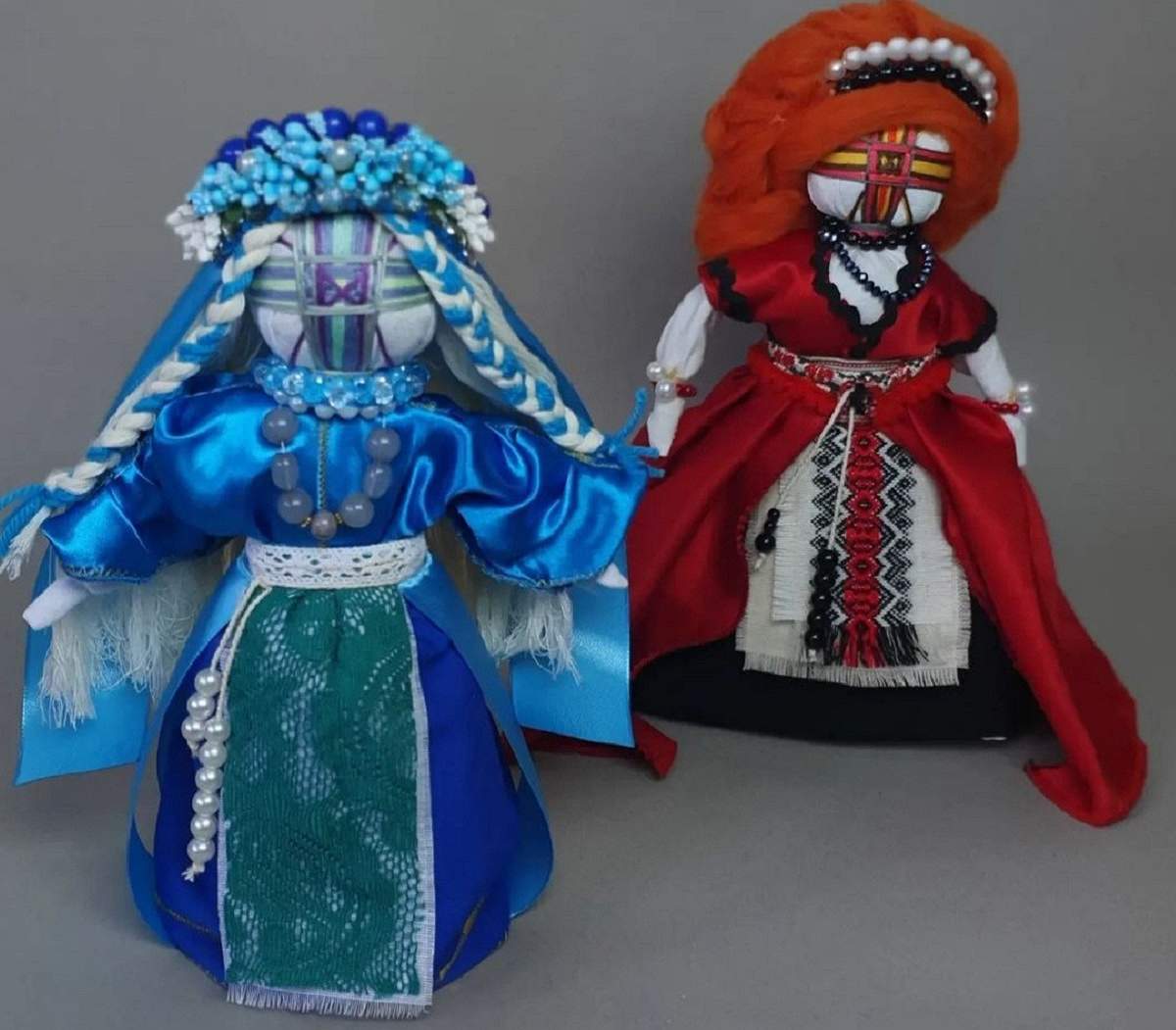
“Water and Fire” made by Tetiana Arzumanian
“On the day the war started there was nowhere to hide when the air raid alarms went off,” recalled Nekrylova, a Zaporizhzhia native, who was forced to leave her home. As the war prolonged, she and her husband at one point “stopped hiding … since we realized that if a missile hit, we would all die anyway under the debris.” Through the exhibition, Nekrylova hopes to send her message: “We want peace, and our children want to live under a peaceful sky.”
“It is very difficult to accept what is happening now in my country,” said Valentyna Miroshnik, a resident of the Cherkasy region in central Ukraine. “We never know what will happen in the next minute.
“I found creativity as a means to escape from my difficult reality.” With her dolls, Miroshnik knows “even small motanka can help support Ukrainian people and children who are suffering from this war.”
Inoue said she felt interest in supporting Ukraine has been fading as the war has prolonged. “I hope the exhibition reminds people that the war is still ongoing, and at the same time, visitors can learn about Ukrainian culture through the dolls and the stories behind them,” she said.
After the Yokohama exhibition, which ends on March 20, she plans to hold another exhibition in Kyoto in late March and hopes to continue them beyond Kyoto.
The project website displays the various motanka dolls sent from Ukraine and other places, along with the stories of the doll makers. For details on the events and project, visit: https://aitsugi.handmade.jp/
"Society" POPULAR ARTICLE
-

M4.9 Earthquake Hits Tokyo, Neighboring Prefectures
-

M7.5 Earthquake Hits Northern Japan; Tsunami Waves Observed in Hokkaido, Aomori and Iwate Prefectures
-

Tsukiji Market Urges Tourists to Avoid Visiting in Year-End
-

Israeli Tourists Refused Accommodation at Hotel in Japan’s Nagano Pref., Prompting Protest by Israeli Embassy and Probe by Prefecture
-

M5.7 Earthquake Hits Japan’s Kumamoto Pref., Measuring Upper 5 Intensity, No Tsunami Expected
JN ACCESS RANKING
-

Keidanren Chairman Yoshinobu Tsutsui Visits Kashiwazaki-Kariwa Nuclear Power Plant; Inspects New Emergency Safety System
-

Imports of Rare Earths from China Facing Delays, May Be Caused by Deterioration of Japan-China Relations
-

University of Tokyo Professor Discusses Japanese Economic Security in Interview Ahead of Forum
-

Japan Pulls out of Vietnam Nuclear Project, Complicating Hanoi’s Power Plans
-

Govt Aims to Expand NISA Program Lineup, Abolish Age Restriction





